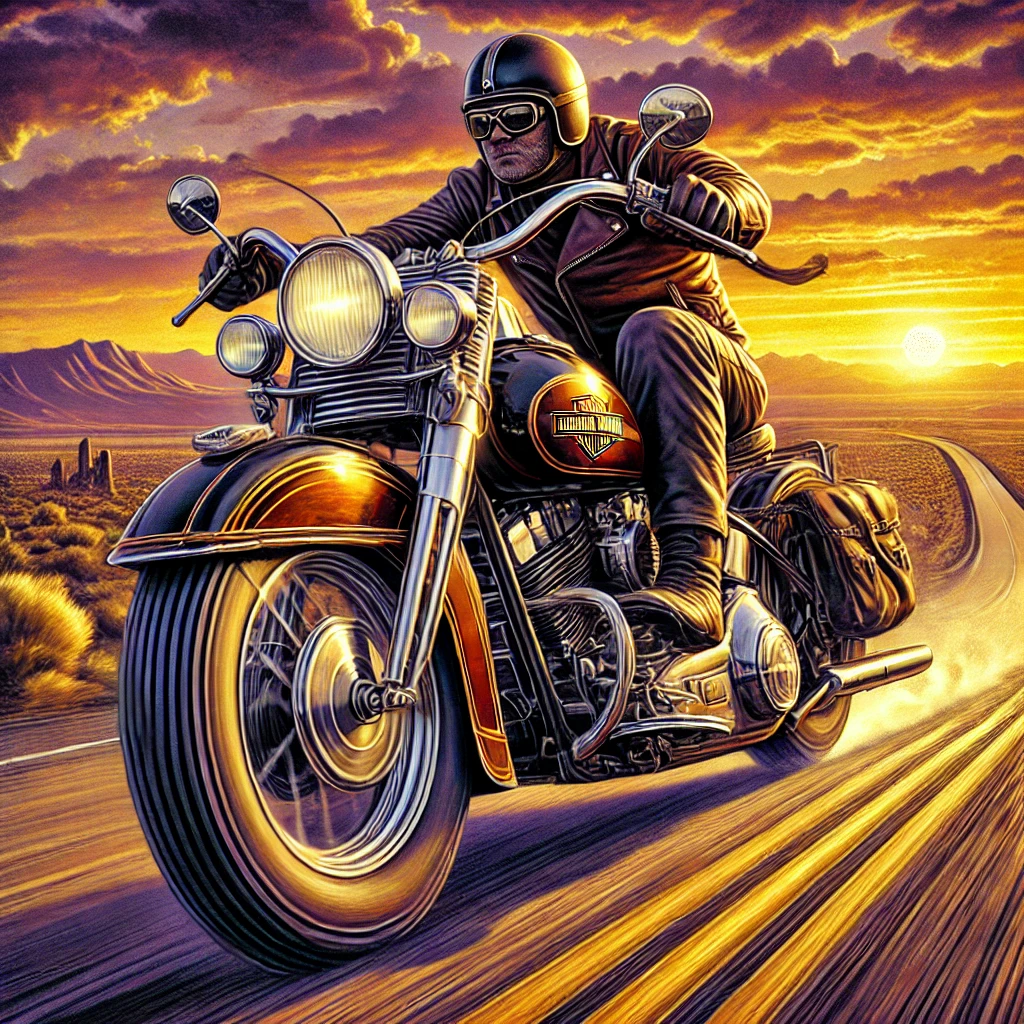
There are few sounds on God’s cracked asphalt more American than a Harley-Davidson at full snarl. It’s not just a motorcycle—it’s a middle finger wrapped in chrome. And that noise? Pure rebellion in audible form. Forget your electric scooters humming like a bored mosquito—Harley’s roar is the battle cry of the unapologetically free.
The Harley-Davidson story began in 1903, when the Davidson brothers and William Harley decided bicycles should explode more often. But the real legend roared to life in the 1960s when a few friendly neighborhood outlaws called the Hells Angels made Harley the two-wheeled symbol of nonconformity. Hunter S. Thompson rode with them, lived through it, and somehow made Harleys sound even more dangerous than the maniacs riding them.
The Sound That Launched a Thousand Middle Fingers
This is more than just engine noise—it's the voice of rebellion, a mechanical war cry that says, "I ride, therefore I am (faster, louder, and more interesting than you)." Harley's legendary 'potato-potato' thrum comes from the unique firing order of its 45-degree V-twin engine—a sound so iconic, the company tried to trademark it. Gearheads describe it as a syncopated, loping rhythm, like a jazz drummer with road rage.
That sound is an attitude. It rattles windows, wakes neighbors, and makes dogs howl—and riders wouldn't have it any other way. It's the primal language of freedom: part roar, part rumble, all swagger. Riders say the growl of a Harley speaks to the soul. It’s an anthem for the open road, a defiant declaration that life is best experienced without a muffler.
How Harley Sold the Roar: Marketing Noise as Mythology
Harley-Davidson didn’t just sell motorcycles—they sold attitude with a side of thunder. Their marketing told you that owning a Harley wasn’t a choice; it was a declaration of independence. Harley ads didn’t highlight horsepower; they showcased horsepower's growl. Slogans like “Screw it, let’s ride” weren’t marketing lines—they were battle cries.
The sound itself became Harley’s loudest ad. When Harley attempted to trademark their iconic roar in the '90s, they lost the case but won something bigger: cultural immortality. The publicity alone was worth more than any courtroom victory. Harley made it clear—their bikes didn’t hum, they howled.
Even their merchandise campaigns were soaked in rebellion. Leather jackets, branded helmets, and merchandise that smelled like road trips and recklessness kept the Harley lifestyle accessible—even for people who didn’t own a motorcycle but wanted the roar in their wardrobe.
The Future: Can an Electric Harley Growl?
But here’s the rub: the future is electric. Harley's LiveWire zips faster than a caffeinated cheetah but hums like a determined blender—smooth, efficient, and absolutely soulless. Harley’s challenge isn’t just engineering torque; it’s engineering attitude. Can rebellion whisper? Will riders crave the roar, or will nostalgia for internal combustion drown out the silence?
The sound of a Harley is more than noise; it’s narrative. It’s the battle cry of road warriors, freedom junkies, and anyone who knows that the best conversations happen without words—just throttle. Long live the potato-potato, even if someday it has to be pre-recorded.